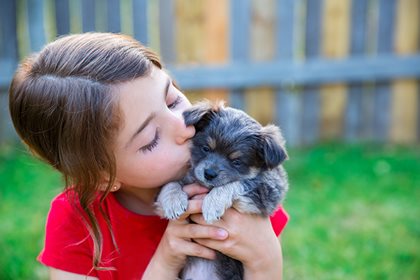Friday April 22, 2016
Why create a pet-friendly HOA?
 Among the amenities that many HOA’s are adding, a lot of those amenities are those geared towards creating a pet friendly community. These can range from simply having dog-friendly treats like biscuits and bowls of water available in the main office to providing on-site pet services, such as pet spas.
Among the amenities that many HOA’s are adding, a lot of those amenities are those geared towards creating a pet friendly community. These can range from simply having dog-friendly treats like biscuits and bowls of water available in the main office to providing on-site pet services, such as pet spas.Why have pet amenities become so popular? Simply put, pet ownership continues to thrive. According to the latest statistics, 65 percent of all U.S. households have some kind of pet (American Pet Products Association) and 33 percent of Canadian households have a dog or cat (Canadian Animal Health Institute). That’s a lot of pets! And most pet owners see their animal companions as family members so they want them to be happy wherever they live.
But before deciding that pet amenities are right for your community, find out if your residents even want them. How many residents actually have pets? Will most residents be willing to appropriate space and money for these amenities? Depending on your unique needs, constraints, and level of interest, here are five suggestions for making your community more pet friendly.
How to make your community pet friendly
-
Install pet waste stations.
Putting stations along routes and open spaces where residents typically walk their dogs makes it easier for them to dispose of waste. Not only is this a convenience for pet owners, but it keeps the community cleaner as well. Waste stations should have both plastic bag dispensers and covered receptacles to minimize odor, and they should not be located directly in front of anyone’s home. Be sure to have a plan for regularly replenishing bags and emptying waste.
-
Build a dog park.
Dogs (and their owners!) love to socialize, and dog parks provide a safe way to do just that. Plus, well-exercised pets tend to be calmer, making them more enjoyable for everyone in the neighborhood.
Choose a location far enough from homes so that barking won’t disturb residents. The space should be large enough for the dogs to run, but it doesn’t need to be perfectly flat. If possible, have separate enclosures for small and large dogs. Make fencing at least five feet high, and include a double gate. For the surface, use decomposed granite rather than grass. Grass is easily damaged from use—not to mention urine—and it requires regular maintenance. Add benches and shading where pet owners can relax while their dogs play. A nice addition is a high/low water fountain so that both people and dogs can get a drink.
-
Create a dog run.
Not enough room for a dog park? A dog run may be just the answer. Dog runs can be a smaller version of a dog park, or they can be built into an existing structure. A large terrace or even the roof of a building can provide the ideal location. If the dog run will be part of a structure, plan to include a built-in rinsing and drainage system to keep the surface clean.
-
Provide ways for pet owners to socialize.
This can be as simple as putting up a bulletin board where pet owners can find each other or share referrals to pet services. With just a little extra planning, your community can go a step farther by sponsoring activities such as social hours, pet parades, or dog-friendly hikes. Invite all residents to attend so everyone can meet and enjoy the community’s four-legged residents.
-
Offer specialized pet services.
Depending on how your community is set up, you might want to consider leasing on-site space to a veterinarian or groomer. Alternatively, you could provide pet owners with a directory of local pet services.
To learn how a professional management company like FirstService Residential can support your community, contact a member of our team.